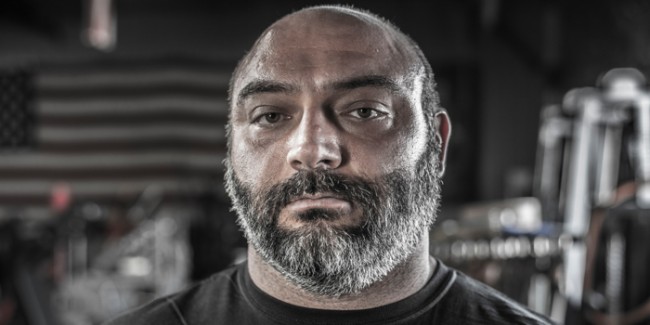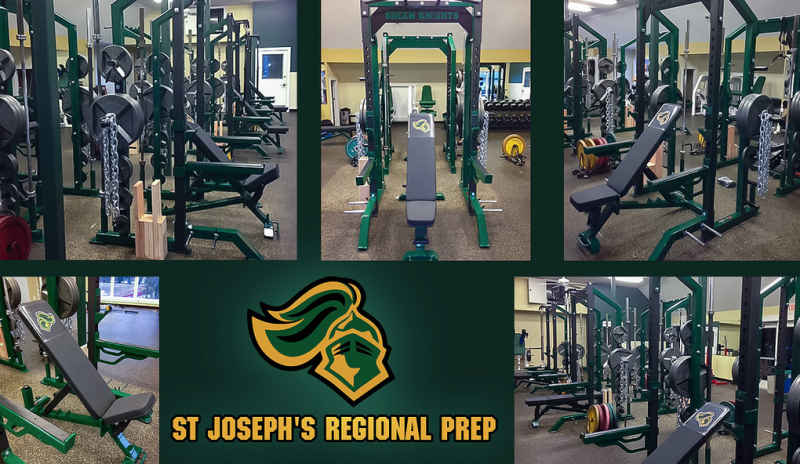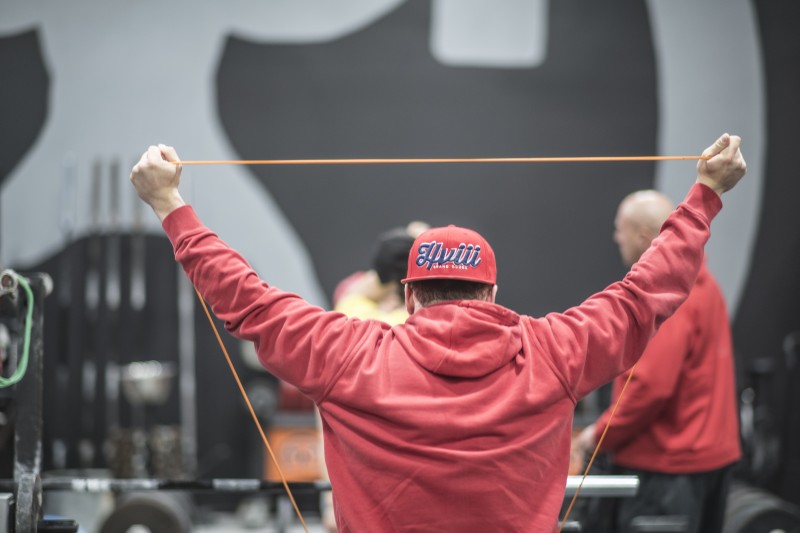
When you’re programming for your athletes during the competitive season, there are many factors you need to consider and many ways you can manipulate the program to maintain off-season progress. Don’t just drop your volume and assume it's good enough unless you’re after "good enough" results. I’m going to talk about some factors other than the traditional energy system considerations, athlete deficiencies, etc. These are things that I believe aren’t always taken into consideration, especially with inexperienced coaches.
Here are some things that need to be considered when programming for in-season training:
- Your facilities and equipment
- Athlete’s practice time; will they train before or after practice?
- Pre-existing training level
- Stress to the body of the athlete’s sport. (e.g., football versus diving)
- Travel schedule versus training schedule
- Training time and duration
Facilities and Equipment
Like it or not, this will be the gatekeeper to how you program your athletes. The first thing I do when I start a new client’s program is look at the equipment list or gym video they've sent me. In a high school or college setting, it’s the same thing. This can be an adjustment if you are going from having everything you could ask for to a high school with three racks and a couple rusty bars, especially if you run a conjugate style program where the rate of variation is high. The good thing is that there are tons of resources available for programming ideas. Also, in-season training typically requires less variation than the off-season because the athletes are dealing with more outside stressors in-season, so the variation doesn’t have to be as severe as during the off-season.
Athlete’s Practice Time
Once you have told your head coach when they will hold practice to best accommodate your training program, you can start to design your template. (I hope you caught the sarcasm there. Coaches determine the practice times and most of the time also choose when their team will lift, regardless of what is best for the athlete.) Many times you have to work around the student-athlete schedule. The coach may not want them getting out of bed early in-season or might demand that they all train together as a team. This can get tricky if you have to sync 20 schedules so they can all be at the same place at the same time.
From the strength coach’s chair, training before practice with a few hours between the two is optimal. This is rarely the case, due to the reasons above. Fatigue at practice should not be an issue if there is adequate time between training and practice, your off-season programming has you prepared, and the in-season template is appropriate. For example, if an athlete didn’t do shit over the summer then they have a fall competitive season, an in-season training session is probably going to be quite taxing to them and hinder practice later on.
Pre-Existing Training Level
This holds true for the in-season and the off-season but carries more weight heading into in-season training. As mentioned in the previous paragraph, if an athlete hasn’t done their work or you haven’t prepped them for in-season training, you can’t all of the sudden throw all sorts of crazy training modalities and volume at them to try to make up ground. This is right along the lines of the old high school football thinking that you’ll get your guys in shape the two weeks before the season at two-a-days — it just doesn’t work! This especially holds true for the athletes who will see significant playing time. The athlete needs to be ready to go, not dragging through because their lifts are too taxing. The way to progress into in-season training is to give the athletes movements, volumes, and stimulus they have already encountered in the off-season. If they’ve never done Olympic variations, don’t decide it’s a good idea to introduce those the fifth week of the season. This isn’t to say you can’t increase these factors, though; you just have to do it slowly and monitor the athletes.
Stress Varies from Sport to Sport
Was it Hans Salye that said the body can’t differentiate between the various types of stress the body encounters? That may be true, but there is a big difference between a football practice and a track practice. I don’t give a shit what Hans’ research says; my own personal experience proves otherwise. The type of sport practice and competition needs to be accounted for. Don’t just think of this as a complete handicap, though. It can work for you.
Let’s take throwers, for example. Because of the way their sport, practices, and competitions are set, in my experience, we were able to train them four days per week all year round. I would never do this with a football player who sees significant playing time. When accounting for this variable, you also have to take into consideration our previous factor (preparation level). While these are all separate factors, they all affect each other — just like our training lanes!
Travel Schedule vs. Training Schedule
Does your team train the day after traveling? How long was their trip? Were they on a bus or a plane? Don’t think this plays a factor and then go sit on a bus overnight for eight hours and train the next morning. I’ve had coaches tell me, "They’re good. Most of them slept most of the ride.” Days like this are a good time to involve your athletes in the educational process and let them know things will be scaled back and training will go fast but that they need to do a good job or they will not be given this consideration in the future. Most of the time, this will be greatly appreciated and give you some buy-in. With that being said, don’t turn the workout into a "stretch" day if you want your athletes to maintain some level of trainability.
Training Time: How Long Do You Have?
Just like facilities and equipment, this will be one of your limiting factors on programming. You have to be able to identify what you want to train with the athletes but you also have to be able to identify what takes priority. Is spending five minutes on correctives more important than squats? Are jumps more important than accessory work? You have to know what you have time for and what needs to be in the program. And remember the saying that everyone has a plan until they get punched in the face. It’s good to have a plan, but be ready to adjust on the fly. There are many times the training time will be cut down last minute because practice ran too long or for any other reason. You have to be able to evaluate even further where your priorities are and sometimes have to decide in a short amount of time.
Below is a week of training in January for high school football. It took place in the off-season and is the third week in a wave of high volume.
Sample Week
Monday — Max Effort Upper
1. Partner Pec/Delt Smash
2. Blackburns — 2x30 seconds
3. Close Grip Push-Up on Knees, Banded Pushdowns — 4x15
4. Floor Press with Chains, Close Grip Incline — 5RM
5. Floor Press with Chains (2 x failure with 80%), Close Grip Incline Down Sets (2 x failure with 80% of 5RM)
6a. JM Press on Floor with Chains, Incline Skull Crusher — 6x10
6b. Mini Band DeFranco Pullapart Banded Shoulder Clean — Perform for duration of partner’s set on skull crusher
7a. Seated Alternating Band Row, Bench Chest Supported Dumbbell Row — 5x10
7b. Snatch Grip Shrug, Shrug Death — Once through
8a. Hammer Curl, Zottman Curl — 4x12
8b. Dumbbell Side Bend — 5x15
Break the group up on exercises six through eight to avoid traffic jams.
Tuesday — Speed Lower
1. Dynamic Warm-Up
2. 10-Yard sprint — Start on stomach, chase partner for seven chase sprints
3. Seated Abduction — 4x25
4. Seated Box Jump — 6x5
5. Speed Squat with Chains — 10x2 with 50%, 6x2 with 55%
6. Kettlebell Swing, Banded (5x10) or Sumo Speed Pull (10x2 with 60% squat max, 6x2 with 70%, only rest is changing lifter and weight)
7a. Single-Leg Bodyweight Back Extensions — 4x10 each
7b. Groiners — 4x40
8a. Banded GHR — 4x10
8a. Pull-Up — 3x8, 5x8, add weight or assist with band to make eight reps hard
9. Group Abs
10. Banded Hip Mobility
Thursday — Speed Upper
1. Partner Pec/Delt Smash
2. Blackburns — 2x30 seconds
3. Close Grip Push-Up on Knees, Banded Pushdowns — 4x25
4. Speed Bench with Chains — 10x3, various grips all inside the rings
5. Banded Push-Ups — 4 x failure
The following exercises are done for time on coach’s command. Exercises six through eight can be stations. Rotate the athletes for 18 total minutes on accessory work. The athlete does 15 reps, rests 20 seconds, and then 15 reps on coach's command. Rest is approximate. The coach has the group start the next set when the majority of the group is done. The athlete cannot let go of the implement.
6a. Banded Triceps Pushdown
6b. Bent Rear Delts with 10-Pound Plates
7a. Inverted Row with Knees Bent
7b. Light Band Shrug
8a. Curl
8b. See-Saw Abs — No rest for 3 minutes straight
Break the group up on exercises six through eight to avoid traffic jams.
Friday — Max Lower
1. Dynamic Warm-Up
2. 10-Yard Sprint — Start on all fours facing sideways, chase partner for seven chase sprints
3. Seated Abduction (4x25), Chain Knee Raise (4x12)
4. Seated Weighted Box Jump — 6x5
5. Cambered Bar Squat with Chains — 1RM
6. Cambered Bar Reverse Lunge — 3x8
The remaining exercises can be done in any order to avoid traffic jams. These are not supersets. Take one minute of rest between or just keep someone on the machine. Someone finishes and the next guy's up.
7. Dumbbell RDL — 3x10-12
8. Reverse Hyper — 4x30
9. Thompson Hips — 3 rounds
10. Feet Hooked Sit-Up with Dumbell, Hanging Weighted Abs — 4x20
11. Banded Hip Mobility
Below is a week of training in-season high school football (early in the season).
Monday — Max Effort Lower
1. Reverse Hyper (3x15), Chain Knee Raise (3x12)
2. Seated Weighted Box Jump — 3x5
3. Cambered Bar with Chains — 1RM
4. Cambered Bar with Chain Reverse Lunge — 3x6
The remaining exercises can be done in any order to avoid traffic jams. These are not supersets. Take one minute of rest between or just keep someone on the machine. Someone finishes and the next guy's up.
7. Dumbbell RDL — 3x10-12
8. Reverse Hyper — 4x30
9. Thompson Hips — 3 rounds
10. Feet Hooked Sit-Up with Dumbell, Hanging Weighted Abs — 4x20
11. Banded Hip Mobility
Wednesday — Max Effort Upper
1. Partner Pec/Delt Smash
2. Blackburns — 2x30 seconds
3. Close Grip Push-Up on Knees, Banded Pushdowns — 4x15
4. American Press Bar Floor Press with Chains — 3RM
5a. JM Press on Floor with Chains — 4x10
5b. Mini Band DeFranco Pullapart Banded Shoulder Clean — Perform for duration of partner’s set on skull crusher
6a. Chest Supported Dumbbell Row — 3x10
6b. Snatch Grip Shrug — 3x15
7a. Hammer Curl, Zottman Curl — 3x12
7b. Dumbbell Side Bend — 4x15
Break the group up on exercises five through seven to avoid traffic jams.
As you can see, all of the in-season stimulus is very similar to things they saw in the off-season. The volumes are decreased but we’re not doing two sets on accessories. You have to keep some level of volume in the program to keep strength and keep the athletes on point, especially if they were at a high level in the off-season. The workouts are short; many athletes practice up to three hours a day so they don’t need to lift for another two. The movement selection is also what I would consider low demand. Most of the accessory work is special exercises that are not going to crush the athlete (such as the reverse hyper rather than good mornings). This allows the athlete to get the stimulation they need but still be ready to perform at practice and competition. None of these are laws, but hopefully, they can help you keep your athletes ready to perform when it’s most important.













2 Comments